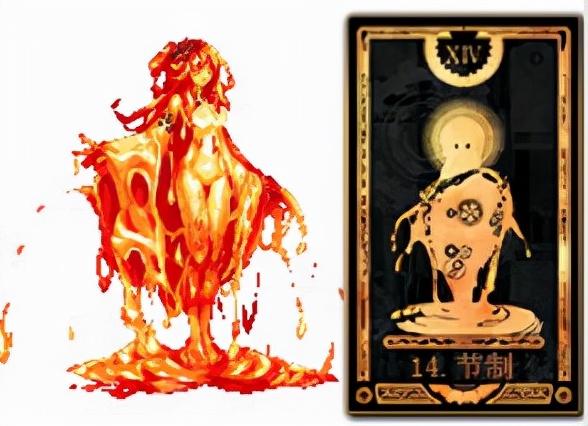粮票不一定人人都见过 粮票一组
粮票是20世纪50年代至85年代中国在特定经济时期发放的一种购粮凭证。 中国最早实行的票证种类是粮票、食用油票、布票等。粮票作为一种实际的有价证券,在中国使用达40多年,随着社会的发展,它已退出了历史舞台,成为收藏者的新宠。
那时候,必须凭粮票才能购买粮食。其实凭票供应不是中国最早采用的,苏联在十月革命后,当时国内不稳定,内战不断,商品缺乏,就采取商品有计划的分配,发放各种商品票证,苏联最早的票证是1916年的鞋票。 美国也在二战时期商品紧张时,发放了各种商品票证,其种类也不少,这其中就含有粮票性质的票证。现在还有一些国家仍然采用凭票供应方式,如朝鲜、越南等一些国家。

各地的商品票证通常分为“吃、穿、用”这三大类。吃的除了各种粮油票外,还有猪、牛、羊肉票、鸡鸭鱼肉票、鸡鸭蛋票,各种糖类票,各种豆制品票及各种蔬菜票等等。穿的除了各种布票外,有化纤票、棉花票、汗衫票、背心票、布鞋票、棉胎票等等。用的有手帕、肥皂、手纸、洗衣粉、火柴、抹布票、煤油票,各种煤票、商品购买证、电器票、自行车票、手表票,还有临时票、机动票等,真是五花八门,涉及各个领域的方方面面。总之,大多数商品都是凭票供应的。什么样的商品就用对应的粮票去购买,对号入座,缺一不可。那么在粮票这一大家族里有些什么品种呢?略举一些有:有直接称粮票的,有大米票、面粉票、粗粮票、细粮票、小米票、土豆票等等。

各种粮票的尺寸是千差万别的,其形式有横式,也有竖式、齿状和正方形。有的粮票与人民币10元大小相同,而有的粮票只有1厘米大小。面额大的在千斤、万斤以上,面额小的仅为一钱以下。计量单位从旧秤市制到最新的千克制,应有尽有。每一套粮票通常按年限区分,依票面单位或重量排列,从1到70余枚不等。粮票内容名称各不相同,更是丰富多彩。粮票的设计各不一样,有的有精美的图案,有的将风景名胜和浓郁的民族风情设计在粮票上,如:陕西的兵马俑、广西的象鼻山、内蒙古的博物馆雕塑、西藏的布达拉宫、上海的外滩、湖南的韶山、贵州的遵义与黄果树瀑布及云南的石林等。有的有蒙文、藏文、维吾尔文、朝鲜文等。有的无图案而且纸质差,这些常体现在早期粮票上,只在纸上印上一些字,有的用铅印、油印,还有专门印粮票的厂家监制印刷,大多数粮票上面还盖有有关部门的公章,有的还印有编号等等粮票自身是没有价值的票证,但凭粮票可买到国家牌价粮食,实际上粮票成了一种有价证券。粮票的面值等于国家牌价粮价与市场价之差。1993年后中国已取消使用粮票,粮票很快进入了收藏品的行列,全国集“粮”爱好者也在不断扩大。近两年在香港、澳门特区和欧美一些国家高价购买竞相收藏中国粮票中的珍品。随着时间推移,集粮热的升温,粮票收藏品市场也必将上扬。只要掌握好收藏粮票的基本原则,投资收藏粮票前景十分可观。粮票曾作为中国的第二“货币”,在中国历时40年,它反映了中国各个历史时期的社会经济状况,有较为重要的研究价值和收藏价值。

The food ticket was a kind of food purchase voucher issued by China in a specific economic period from the 1950s to the 1980s. The earliest types of tickets implemented in China are food tickets, edible oil tickets, cloth tickets, etc. As a kind of practical negotiable securities, food stamps have been used in China for more than 40 years. With the development of society, it has withdrawn from the historical stage and become a new favorite of collectors.
At that time, we had to buy food with food tickets. In fact, ticket supply was not the first one adopted by China. After the October Revolution, the Soviet Union adopted a planned distribution of goods and issued various commodity tickets. The earliest ticket in the Soviet Union was the shoe ticket in 1916. The United States also issued various kinds of commodity tickets during the World War II when commodities were scarce, including food tickets. At present, there are still some countries that still use voucher supply, such as North Korea, Vietnam and other countries.
Commodity tickets in various regions are usually divided into three categories: "eat, wear and use". In addition to all kinds of food and oil tickets, there are also tickets for pigs, cattle, mutton, chicken, duck, fish, eggs, sugar, bean products and vegetables. In addition to various cloth tickets, there are chemical fiber tickets, cotton tickets, sweatshirt tickets, vest tickets, cloth shoes tickets, cotton tire tickets and so on. There are handkerchiefs, soap, toilet paper, washing powder, matches, rag tickets, kerosene tickets, all kinds of coal tickets, commodity purchase certificates, electrical tickets, bicycle tickets, watch tickets, as well as temporary tickets, motor tickets and so on. They are really diverse, involving all aspects of various fields. In short, most goods are supplied by voucher. What kind of goods should be purchased with the corresponding food tickets, and it is necessary to take the seats according to the number. So what kinds of food stamps are there in this big family? Some of them are: rice tickets, flour tickets, coarse grain tickets, fine grain tickets, millet tickets, potato tickets, etc.
The sizes of various food stamps vary greatly, with horizontal, vertical, toothed and square forms. Some food stamps are the same size as 10 yuan, while others are only 1 cm in size. The ones with large denomination are more than 1000 jin and 10000 jin, while those with small denomination are only less than one yuan. Units of measurement range from the old scale system to the latest thousand restraint. Each set of food stamps is usually divided by age, and is arranged according to the face unit or weight, ranging from 1 to more than 70. The contents and names of the food stamps are different, and more colorful. The designs of food stamps are different, some have exquisite patterns, some have scenic spots and strong ethnic customs on food stamps, such as Terra Cotta Warriors in Shaanxi, Elephant Trunk Mountain in Guangxi, museum sculptures in Inner Mongolia, Potala Palace in Tibet, the Bund in Shanghai, Shaoshan in Hunan, Zunyi and Huangguoshu Waterfalls in Guizhou, and Stone Forest in Yunnan. Some include Mongolian, Tibetan, Uygur, Korean, etc. Some have no patterns and the paper is poor. These are often reflected in the early grain tickets. Only some words are printed on the paper. Some are printed with lead and oil, and some are produced and printed under the supervision of the manufacturer who specially prints the grain tickets. Most of the grain tickets are also stamped with the official seal of the relevant department, and some are also printed with the number. The grain tickets themselves are worthless tickets, but the grain tickets can be purchased with the national price. In fact, the grain tickets have become a valuable security. The face value of the food ticket is equal to the difference between the national food price and the market price. After 1993, China has cancelled the use of food stamps, which soon entered the ranks of collectibles, and the number of "food" lovers nationwide is also expanding. In the past two years, we have purchased the treasures in the competitive collection of Chinese food stamps at high prices in Hong Kong, Macao Special Administrative Region and some countries in Europe and the United States. With the passage of time, the market of food stamps and collectibles will also rise with the increase of grain collection fever. As long as we grasp the basic principles of collecting food stamps, the prospect of investing in collecting food stamps is very promising. As the second "currency" of China, the grain ticket has lasted for 40 years in China. It reflects the social and economic conditions of China in various historical periods and has relatively important research and collection value.
,免责声明:本文仅代表文章作者的个人观点,与本站无关。其原创性、真实性以及文中陈述文字和内容未经本站证实,对本文以及其中全部或者部分内容文字的真实性、完整性和原创性本站不作任何保证或承诺,请读者仅作参考,并自行核实相关内容。文章投诉邮箱:anhduc.ph@yahoo.com






